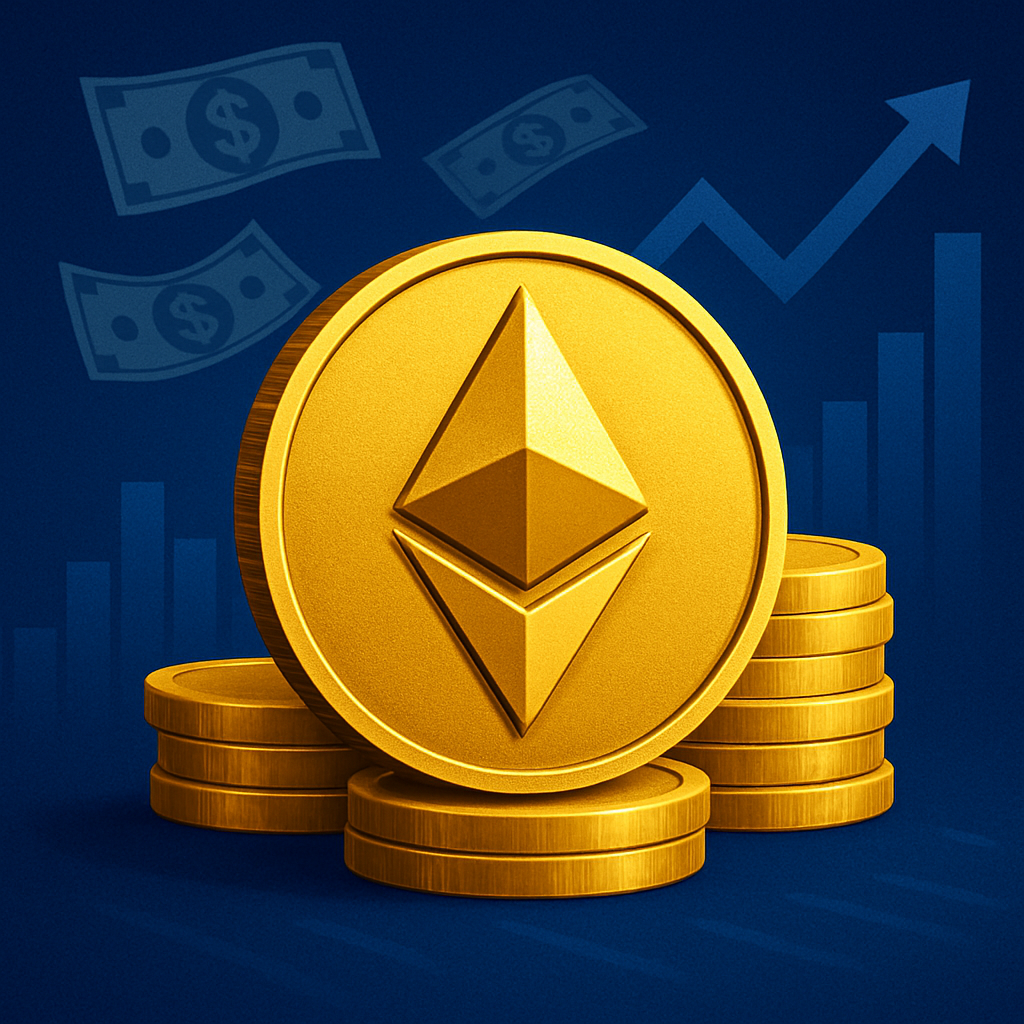Ethereum Stablecoin market has witnessed a meteoric rise, from just $124,500 in January 2018 to an astonishing $124.5 billion as of May 6, 2025, according to DeFiLlama. This marks a staggering one-million-fold increase and highlights Ethereum’s emergence as the primary infrastructure for digital dollar liquidity in the crypto ecosystem.
Tether (USDT) leads the Ethereum Stablecoin charge with 52% market dominance, contributing $64.7 billion to the total. Close behind is USD Coin (USDC) at $37 billion, followed by newer entrants like Ethena’s USDe ($4.5B), Sky Dollar’s USDs ($3.8B), and DAI ($3.6B). Other notable players include BlackRock’s BUIDL, USDtb, FDUSD, USDO, and PayPal’s PYUSD.
Despite a slight dip of 0.08%, approximately $100 million, over the past week, the Ethereum-based stablecoin ecosystem remains robust and highly liquid.
Meanwhile, Ethereum itself is trading at $1,804, up 10.9% over the last two weeks. The network’s market cap stands at $216 billion, with daily trading volumes hitting $9.2 billion.
This exponential growth aligns with Ethereum’s upcoming network upgrade, featuring EIP-7251. The update is set to raise the validator staking limit from 32 ETH to 2,048 ETH, a move that could reshape decentralization and boost on-chain scalability.
Stablecoin Market Nears $240B Milestone
The stablecoin market is reaching a new level of maturity, with its total global capitalization approaching the $240 billion mark, close to an all-time high. In the final week of April alone, over $5 billion in fresh supply entered circulation, underscoring the sector’s rapid acceleration. Year-over-year growth paints an even more compelling picture of rising adoption and utility.
Between February 2024 and February 2025, the number of active stablecoin wallets surged from 19.6 million to 30 million, marking a 53% increase. During the same period, total supply expanded from $138 billion to $225 billion, reflecting heightened demand from both retail and institutional users.
Tether (USDT) continues to dominate with more than 61% of the global market share. However, growing traction from rivals like USD Coin (USDC), Ethena’s USDe, and DAI signals a diversifying and evolving ecosystem.
Fueling this momentum is a perfect storm of institutional interest, regulatory clarity, and technological infrastructure. Global financial giant Citigroup recently projected that the stablecoin market could hit $2 trillion by 2030. In a more bullish forecast, the market could balloon to $3.7 trillion if mass adoption continues across emerging and developed markets alike.
Mastercard and Stripe Push Real-World Adoption
Adding to the institutional push, Mastercard has stepped forward as a surprising advocate for digital dollar payments. Through partnerships with Circle, Paxos, and payment processor Nuvei, Mastercard has rolled out a full-stack stablecoin strategy. This initiative allows over 150 million merchants to accept stablecoins via on-chain remittances, instant settlements, card issuance, and wallet support, marking a major leap for real-world crypto payments.
Not to be left behind, Stripe is preparing to launch its own USD-backed stablecoin solution aimed at expanding payments infrastructure beyond North America and Europe, targeting global accessibility.
As regulation tightens and legacy financial institutions dive deeper into the space, the stablecoin market is evolving from a niche asset class into the backbone of the future digital financial system.
Ethereum Powers Trillions Despite Market Drop
Ethereum’s price fell 45% in Q1 2025, but its network activity told a different story. According to Bitwise, Q1 saw stablecoins settle $27.6 trillion on-chain, more than double Visa’s 2023 volume of $12 trillion. Ethereum processed the majority of this, reinforcing its role as the top settlement layer for digital assets.
Scalability has improved significantly through Layer 2 solutions like Arbitrum, Base, and Optimism, which offer low fees and high throughput. Ethereum’s median transaction fee was just $0.66, and it continues to lead in developer activity across the blockchain industry.
Q1 also marked a shift in U.S. crypto policy. A pro-crypto president declared digital assets a national strategic priority. Executive orders followed, including the creation of a Strategic Bitcoin Reserve, eased banking restrictions, and dropped SEC lawsuits, reversing past enforcement trends.
Despite competing chains like Solana gaining short-term attention, Ethereum remained the core of DeFi and smart contract innovation. Uniswap alone generated over $1 billion in revenue, and rollup adoption further strengthened Ethereum’s infrastructure.
Once used for speculative ICOs, Ethereum now underpins trillions in stablecoin settlements, making it a critical pillar of the global crypto economy.






